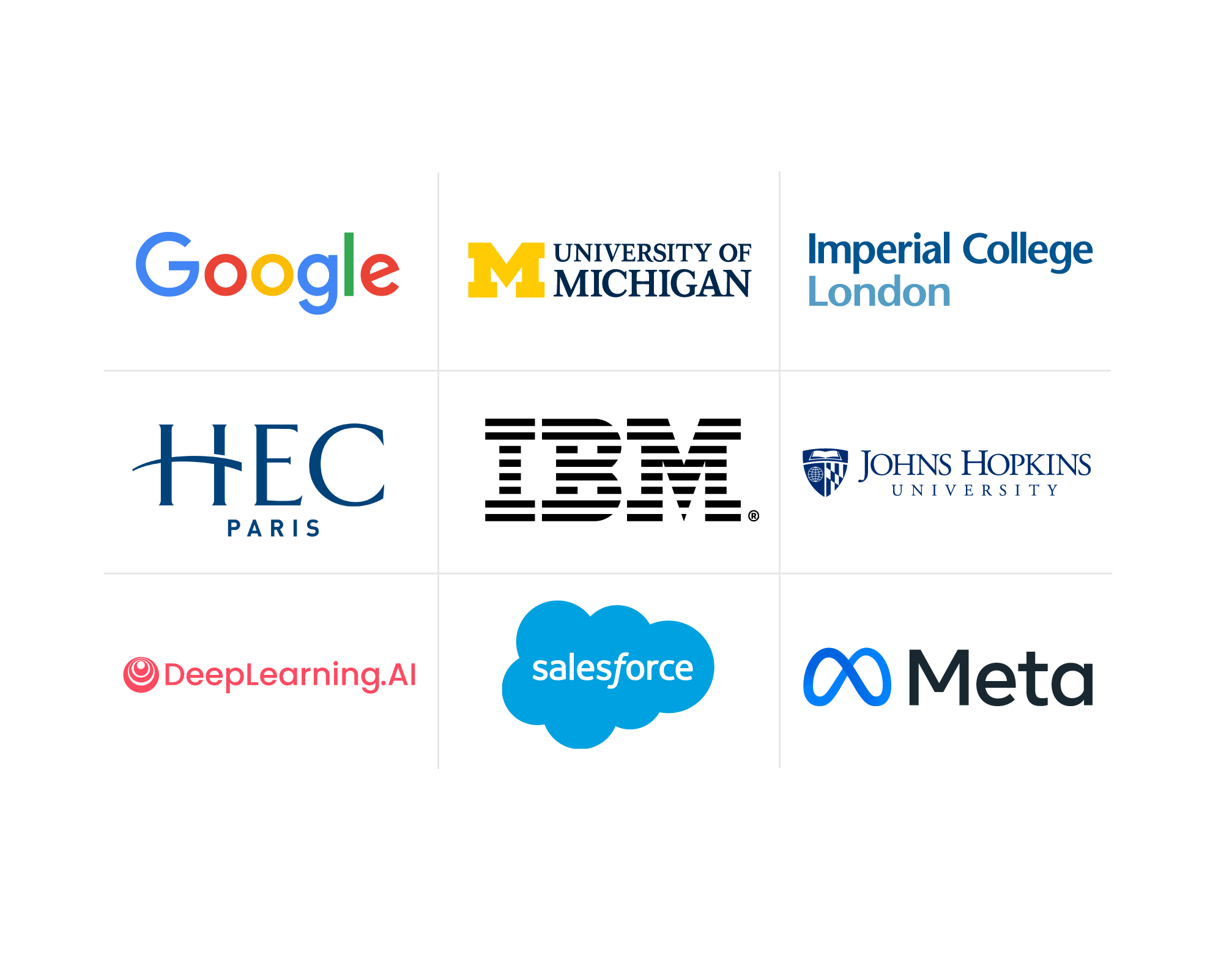Unveiling Insights into Learning and Development for Companies
Learning and development are essential for employee success, satisfaction, and growth. Discover how to create an effective learning and development strategy and what corporate learning and development involves.
![[Featured Image] A woman leads a team meeting.](https://d3njjcbhbojbot.cloudfront.net/api/utilities/v1/imageproxy/https://images.ctfassets.net/2pudprfttvy6/2NdwotTLqmxCWENA2XtX9Q/6d6e819415a6aa145ee25a6cdb364b2b/iStock-501653292.jpg?w=1500&h=680&q=60&fit=fill&f=faces&fm=jpg&fl=progressive&auto=format%2Ccompress&dpr=1&w=1000)
The ever-evolving nature of technology and other advancements in the workplace means that it’s more important than ever to invest in the upskilling and reskilling of your employees. A robust learning and development (L&D) program not only supports your workers and helps them to stay ahead of any skill gaps that inevitably occur due to the prioritization of new knowledge in the work environment but also provides you the opportunity to capitalize on a well-developed workforce as an employer.
According to Forbes, the core element of any organization’s profitability is investing in people. “They deliver clients, knowledge, sales, inspiration, and a passion that can only be nurtured. For this reason, learning and development departments are pivotal to the success of any business and arguably their biggest profit center” [1].
Discover key insights into learning and development, how to create an effective program or strategy for your organization, and the elements involved in corporate learning and development.
Understanding modern learning for learning and development
Modern learning, unlike traditional learning, is a dynamic strategy that moves beyond the classroom and typical in-person learning experiences. To create a successful learning and development strategy, you first need to understand the dynamics of modern learning, which includes a variety of training methods and strategies to address the needs of your unique workforce. Employees’ needs may include elements such as easy accessibility, learner autonomy, and current material. You might consider implementing methods such as simulations, role-playing, and learning in a team environment.
New approaches to corporate learning
Corporate learning and development isn’t a single type of training but rather a collection of a wide range of strategies, learning opportunities, and methodologies to address different goals. Depending on your needs, this might include a robust onboarding program or efforts to upskill your current workforce.
It’s important to identify what your business’s specific goals are and then tailor your learning efforts to address those goals. For example, several of your employees might need to develop their skills in different areas, so you can create a learner-centric approach in which you formulate a training regiment personalized for each worker. Consistently reevaluating your learning and development strategies and metrics helps to keep your training flexible, learner-focused, and value-driven.
Importance of continuous learning
Continuous learning is important because it helps employees stay up-to-date on the latest trends and tools relevant to their jobs. This helps prevent skill gaps from developing, as well as providing your employees with the opportunity to learn new ways to work and think.
In addition, employees who have access to continuous learning tend to become more productive and are much more likely to stay and grow in their roles instead of seeking out new employment.
Key components of effective learning and development strategies
Effective learning and development strategies involve multiple factors, such as customized learning and tools for measuring its effectiveness, that all work together to create a cost-effective, value-driven program that results in better performance and happier employees. Below are a couple of common factors to consider.
Customizing learning paths for employees
Learning and development strategies that target specific skills and knowledge tend to be more effective for employees since they can choose to engage with courses and training that apply to their particular roles or career trajectories. Additionally, some learners absorb new information—working on their own—while others prefer guidance, so it’s important to tailor learning to the individual whenever possible.
Offering customized learning paths also helps appeal to your employees’ different learning styles, which tends to mean better information retention and engagement rather than making everyone use the same learning methods.

Leveraging technology in training
Online courses, mobile apps, and other on-demand technology platforms are key components of an effective, flexible learning and development strategy. Artificial intelligence also plays a role in training content creation and a recommender system to help your employees know what courses to take as they progress through their training.
Furthermore, your managers can use AI to analyze data about the training to determine what employees could benefit from additional learning in certain areas. Gamification, or the incorporation of game-like challenges or badges, is an effective way to keep employees interested, motivated, and engaged with what might otherwise be dry content.
Measuring learning effectiveness
Utilizing key performance indicators (KPIs), which are stated metrics and goals, to understand employee progress is a vital factor in measuring learning effectiveness. You first need to assess the objectives of your business and employees, then make goals or standards that reflect the unique outcomes you’re hoping to see as a result of your learning and development strategies.
Several important KPIs you might consider using to measure the success of your L&D program are the impact of the training (on revenue, for example), an increase in employee engagement, employee retention, and whether your teams are more effective.
Employee feedback is also important. If you can excite and motivate employees to engage with their learning courses, the courses themselves are much more effective. To obtain employee feedback, you can implement a few different methods, such as pilot groups, skip-level interviews (where an employee meets with a manager other than their own), and employee surveys.
Read more: Data Literacy for Business: Your 2024 Guide
Employee engagement and motivation
Learning and development strategies are only effective if the employees who engage with them are motivated to do so. You can increase engagement and motivation by establishing learning as part of your company’s culture while also being clear about how a more nuanced skill set benefits both the employee and the organization.
In leadership, you have the ability to help increase employee morale and encourage better participation through the inclusion of several methods that help promote L&D positively in the workplace. Some of these factors include:
Fostering a culture of learning
A company that invests in fostering a culture of learning tends to attract employees who want to feel like their time at work is spent on something worthwhile, such as learning new skills that can contribute to their future careers. This culture of learning can help your employees feel in control of their careers and be more independent and confident, requiring less oversight and anxiety about making mistakes. Establishing this culture of learning can increase the motivation of your employees, which provides you with a more engaged workforce that is better prepared for the future.
Read more: Fostering a Learning Culture within Your Company: Your 2024 Guide
Recognition and rewards for learning achievement
Providing recognition and rewards for learning achievements and accomplishments is a key strategy for helping your employees feel seen and celebrated for their hard work. Depending on the employee's level of achievement, you might give them formal recognition during a staff meeting or offer badges, certificates, or other incentives. When employees feel recognized, they tend to participate more in training courses, which can contribute to the culture of learning in your organization.
Overcoming challenges in implementing L&D initiatives
When implementing L&D initiatives within your organization, you can use several methods to overcome any challenges you might face. Furthermore, how you address these challenges can help make your program stronger and more robust.
Addressing budget constraints
It’s often tempting to implement a lot of initiatives at once, which results in an underfunded and stretched-thin program. Instead, you can start with targeted, smaller initiatives that help demonstrate success and gain buy-in from executives. You can consider other options as well, such as encouraging coworkers to share knowledge with one another, identifying government agencies that offer free training in the subjects of compliance and safety, or initiating a mentorship program.
Getting creative about your offerings in relation to your budget helps maximize your program and support the most employees because while the choice to train internally with workshops and courses might be better for some, taking classes might be more effective for others.
Navigating resistance to change
When initiating a new L&D program, some employees, out of either fear or stress, might resist this change to their routines. You can tackle employees’ resistance to change through deliberate opportunities to include them and their perspectives in the construction and progression of your learning and development strategies. Asking for input and addressing their concerns can help them trust the process.
Also, including employees in the development stage allows them to gain a better understanding of how the training directly influences their own career goals and skill set progression in a positive fashion.
Insights into learning and development success stories
Some of the top companies in the world have successfully implemented learning and development strategies to the benefit of both the businesses and the employees. Some examples of these case studies and success stories include:
Amazon provides new hires with a month-long onboarding program and a Career Choice program for those who’ve been with the company for more than one year. This program offers tuition and textbook reimbursement and provides up to $12,000 toward the earning of an associate degree or certificate.
IBM is a pioneer in learning and development, with its first program founded in 1916. The company offers training that includes programs used to identify and produce potential leaders. One of these programs is Basic Blue, which is an in-house training program for managers that incorporates role-playing to cultivate necessary emotional intelligence and coaching skills.
AT&T provides tuition assistance to its employees and has AT&T University, where executives conduct management and leadership training. AT&T offers both in-class and online self-paced learning opportunities.
Get started with Coursera
Learning and development strategies are an effective way to improve employee morale, increase retention, and close skill gaps that occur due to an ever-evolving economy and advancing technology. Incorporating a learning and development program into your business can help both you and your employees.
If you’re considering creating an L&D program for your company, Coursera for Business offers skill-based training that’s applicable across a wide range of industries. You can increase your business’s impact and agility. You can also check out HRCI’s Learning and Development course, available on Coursera, to learn more about establishing new training and opportunities at your workplace.
Article sources
1. Forbes. “Learning And Development Is The New Corporate Profit Center, https://www.forbes.com/sites/forbeshumanresourcescouncil/2021/05/13/learning-and-development-is-the-new-corporate-profit-center/?sh=4831e37134be.” Accessed October 24, 2024.
This content has been made available for informational purposes only. Learners are advised to conduct additional research to ensure that courses and other credentials pursued meet their personal, professional, and financial goals.


